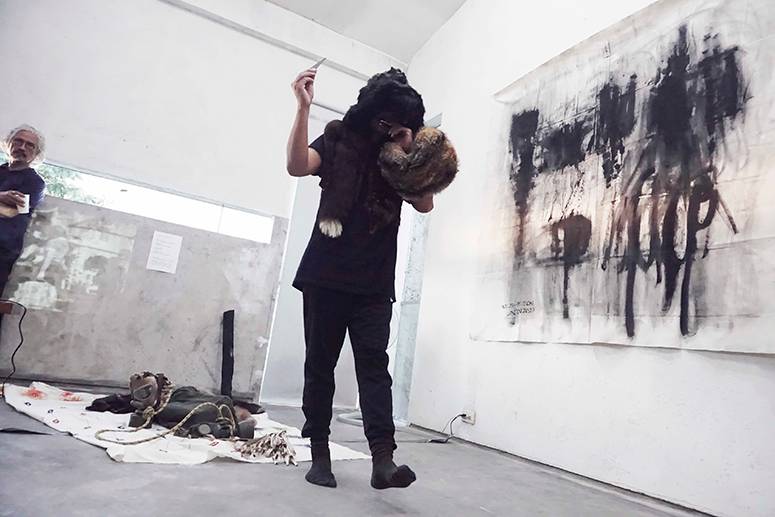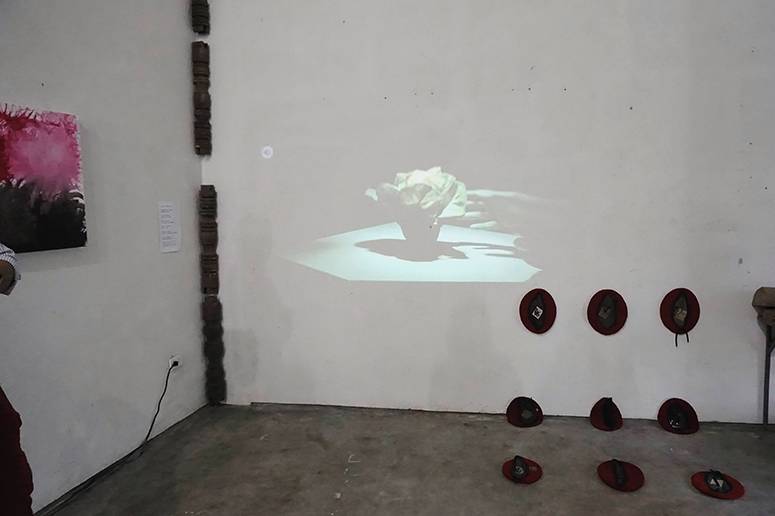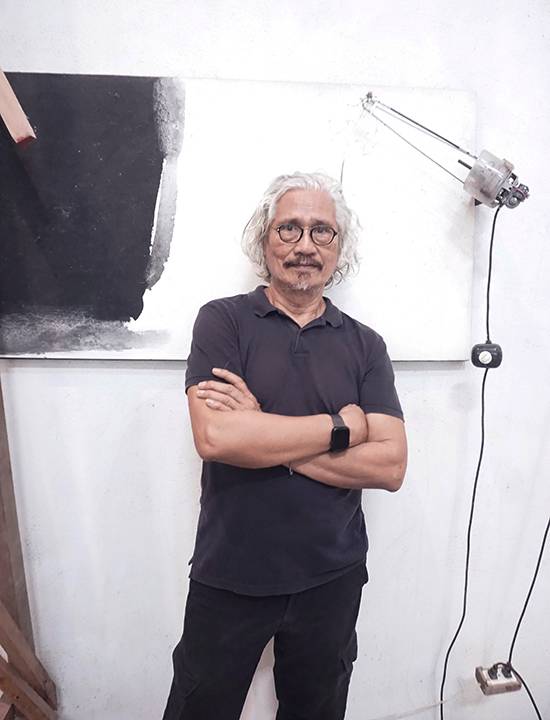Two artist-curators confront a world in flux
I think, inherently, Filipino communities are collectives anyway.” As Kim Chin sits across from me, we talk about the art world’s current enthusiasm for the many tangled strands of collaborative practice, whether it’s participatory art or more durational community-engaged works.
“In a way, I don’t want to be patronizing and say we come to the Philippines and we’re looking for artists with community practice because I think, inherently, you have to do it to survive. It’s not idealistic. It’s not branding or experimental risk-taking... Collectives have happened, I think, because otherwise you can’t survive.”
Practice implies positioning, but Chin is describing the more spontaneous solidarities, the distinctly warm, open, kapwa-oriented character of Filipinos. Based in London, having worked in the US, born to a mom from the Philippines and a dad who is Chinese-Jamaican, Chin understands the richness and complexity of a life that can’t be bound to national ties.
“Transnational (refers to) the artist itself,” says Noel Ed de Leon when I ask him about his long-term initiative called Transnational Movement. De Leon was initially trained as an architect, but migrating from the Philippines to London in 2007 had him moving from one job to another, eventually landing him in an art practice grounded in objects and performances.
De Leon and Chin have come to Brgy. Nangkaan, Batangas, to co-curate the second edition of Transnational Movement. Few other sites seem more resonant with the theme of planetary volatility than a place so close to an excitable volcano. Titled “Convulsion | Eruption,” it is the first exhibition to have opened at Fondation Gallery, a space helmed by abstractionist Gus Albor. The nearness of the Taal volcano imbues an atmosphere of tranquility and foreboding. Against diasporic and climate rupture, de Leon and Chin’s curatorial stance fosters interconnectedness as a mode of survival.

If the diaspora sees kindred people dispersed across the globe, here the artist-curator becomes an agent of contact. Transnational Movement started as a pop-up exhibition in Venice in 2022, coinciding with the 59th Venice Art Biennale. Here in Batangas, they’ve gathered the works of 21 artists and their collaborators from Asia, Europe and North America, a selection based on familiarity and thematic kinships. Many of the sound and video works invoke large histories of planetary crisis and displacement, but one of the things that appears to unite them is a fascination with body-to-body ties: the cross-cultural, the human-animal, the immediacy of touch.
Vegetation blooms gradually in Cyril Lepetit’s video, signaling energies shared between sentient beings. In thinking through diasporic identities, Eelyn Lee points to cosmologies and constellations as she collaborates with UK-based Hong Kongers. There is a sense of performance, duration, ritual—“I held a séance to share light with the dark,” Anne Bean writes—and then there is de Leon sourcing charcoals in Batangas and piling a heap by the glass walls.

“The video pieces are the interpretation of these bigger concepts, whereas the actual physicality of the visual arts almost grounds you with the material of heat,” says Chin. “It’s almost that tension that we’re trying to speak to.”
Art, in de Leon and Chin’s hands, carries a sense of the impromptu and the unfixed. Their respective practices are informed by Fluxus and community organizing, two linked channels that inject the lightning rush of relationality into the practice of art.

Chin initiates projects that are culture- and arts-focused, as one-half of ESEA Unseen, part of the larger London-based collective called ESEA Sisters, which supports and champions East and Southeast Asian voices. With the art workshops she’s led, textile becomes a medium—or a mediator—of stories and affects. “We might have conversations and sew something together,” Chin shares. It might lead them to create banners for protest or unlock narratives “some attendees didn’t know they were holding onto.”
De Leon’s performances are driven by less-conspicuous intentions, but they are also shaped by constraints of belonging. “My work relates to my experience as an immigrant,” says de Leon. “It’s a layer of different encounters.” His participatory actions in London have implicitly worked to make one’s presence felt in public, to claim the otherness that comes with being an artist from elsewhere.

He places Transnational Movement within the lineage of Fluxus, Arte Povera, and the combinatory magic of Robert Rauschenberg. While on the surface it seems like a thoroughly Euro-American bloodline, it was David Medalla, itinerant artist from the Philippines, who sparked de Leon’s drive to pursue art. “I was intrigued: why performance art?” he says. Medalla’s phenomenal works drew from a webbed lineage. His sporadic affairs with Fluxus practices spawned artworks that were open-ended, participatory, itinerant, transnational. Medalla helped establish artist networks in London—Signals art gallery in the ‘60s and Artists for Democracy in the ‘70s—and in the middle of these, staged a performance protest at the Marcos-backed launch of the Cultural Center of the Philippines in 1969.

For de Leon, the idea that binds Fluxus and Transnational Movement is to keep on moving. “We are trying to learn what’s the gap and how we fit into that gap,” he says. Maybe these concepts have been explored before, de Leon concedes, “but how will you fit in an immigrant bringing a box as an installation?” The platform reconsiders movement as migratory. Where the diaspora is a world of bodies in flux, Transnational Movement responds by being as spontaneous and nomadic, flying from Venice to Batangas to who knows where beyond it.
It’s a platform that moves and links.
“Maybe my role is just to connect,” says de Leon. “To connect and amplify,” Chin adds. “A collective voice is stronger than a singular voice.”
* * *
“Convulsion | Eruption” opened last Jan. 9 and runs until Feb. 16 at Site 1, Brgy. Nangkaan, Mataas na Kahoy, Batangas. For more information, see on Instagram.


